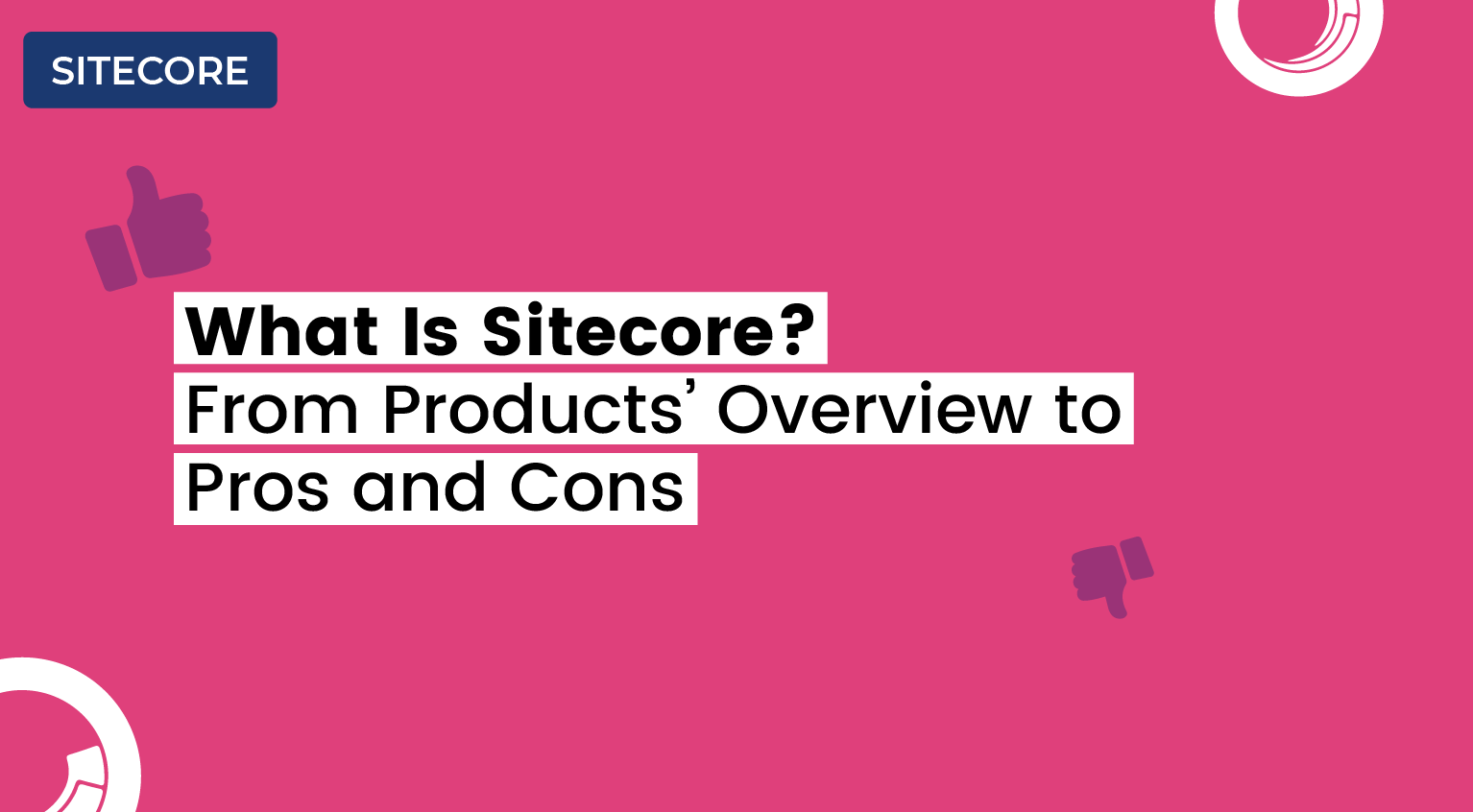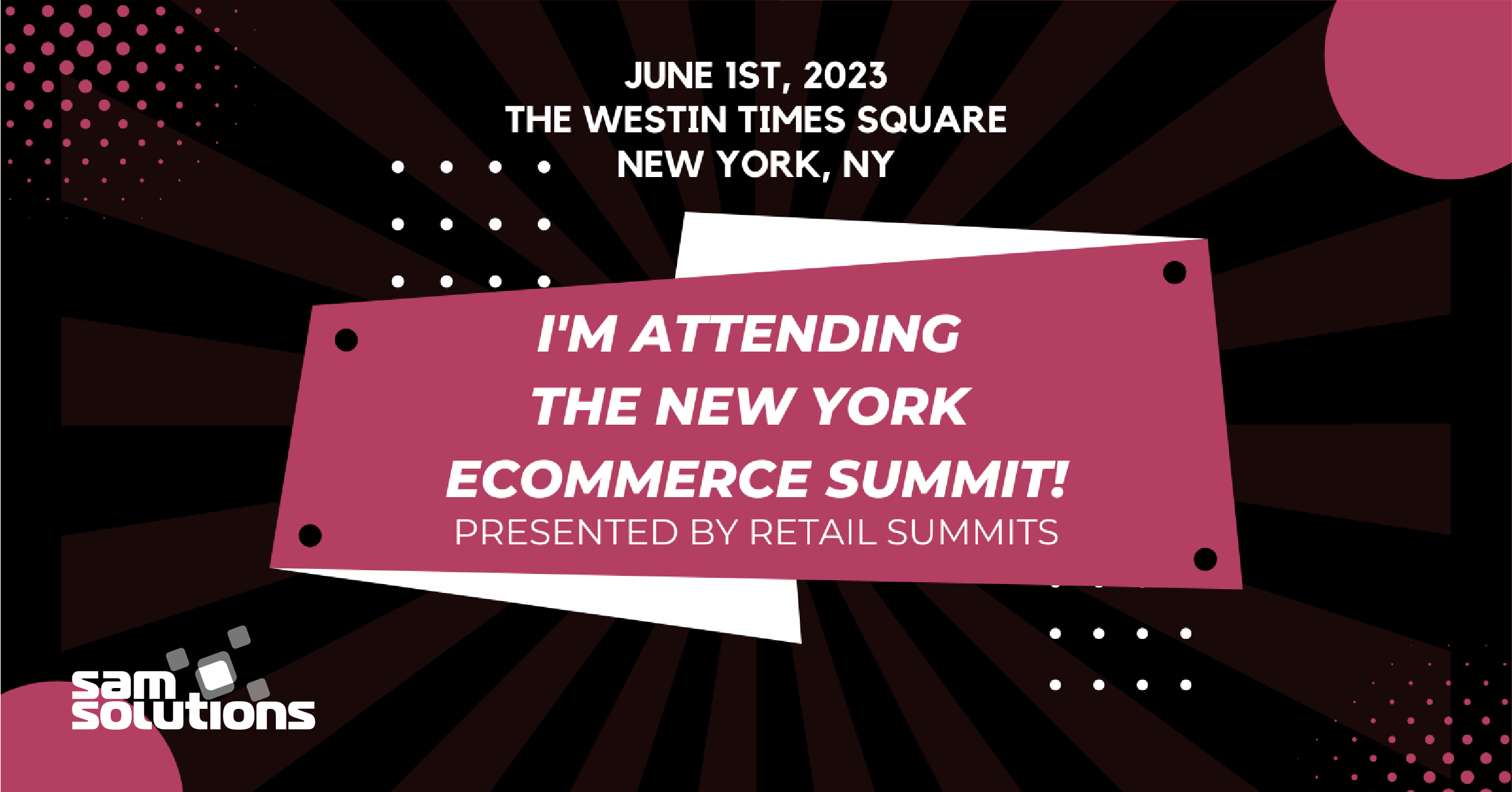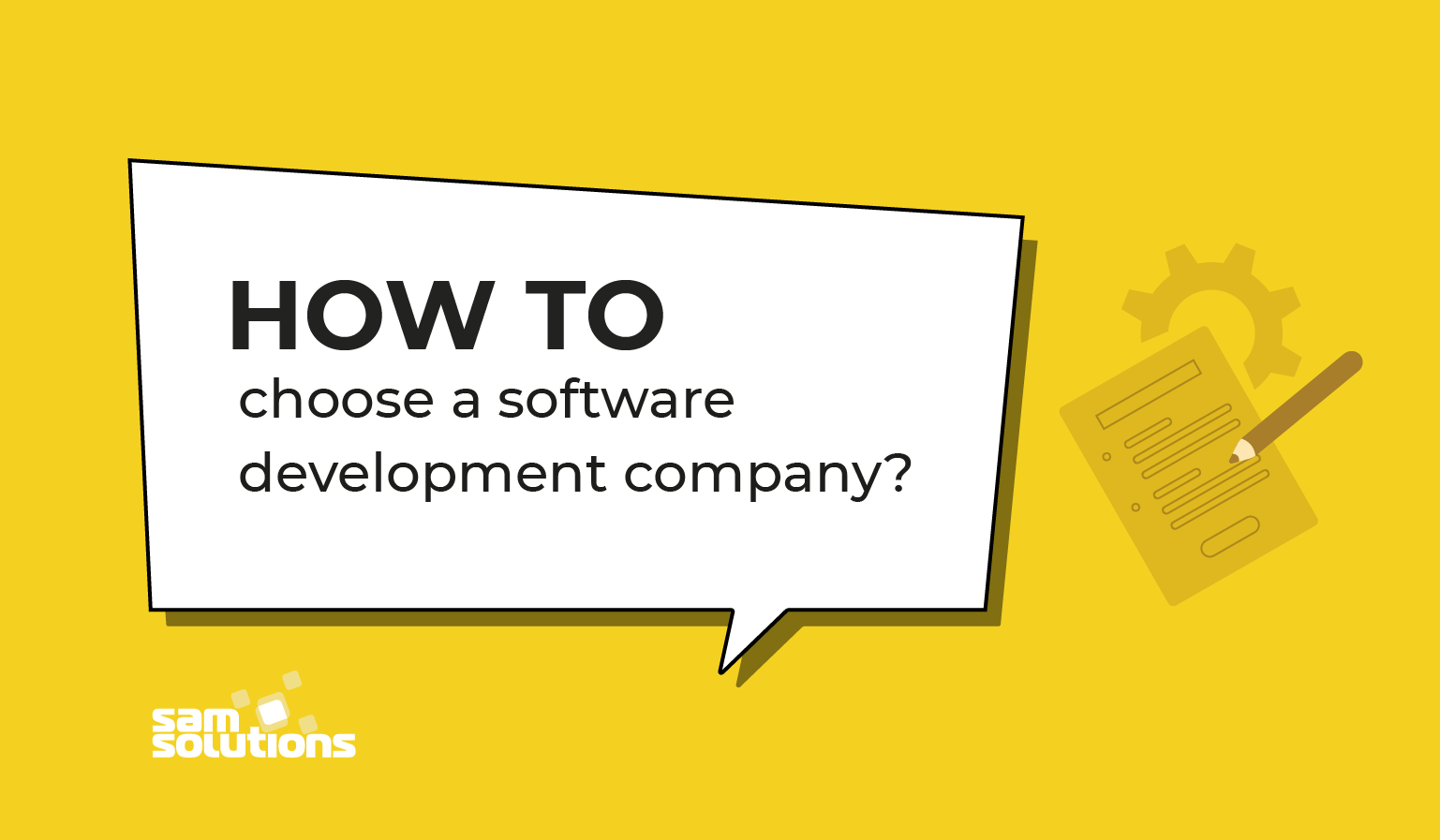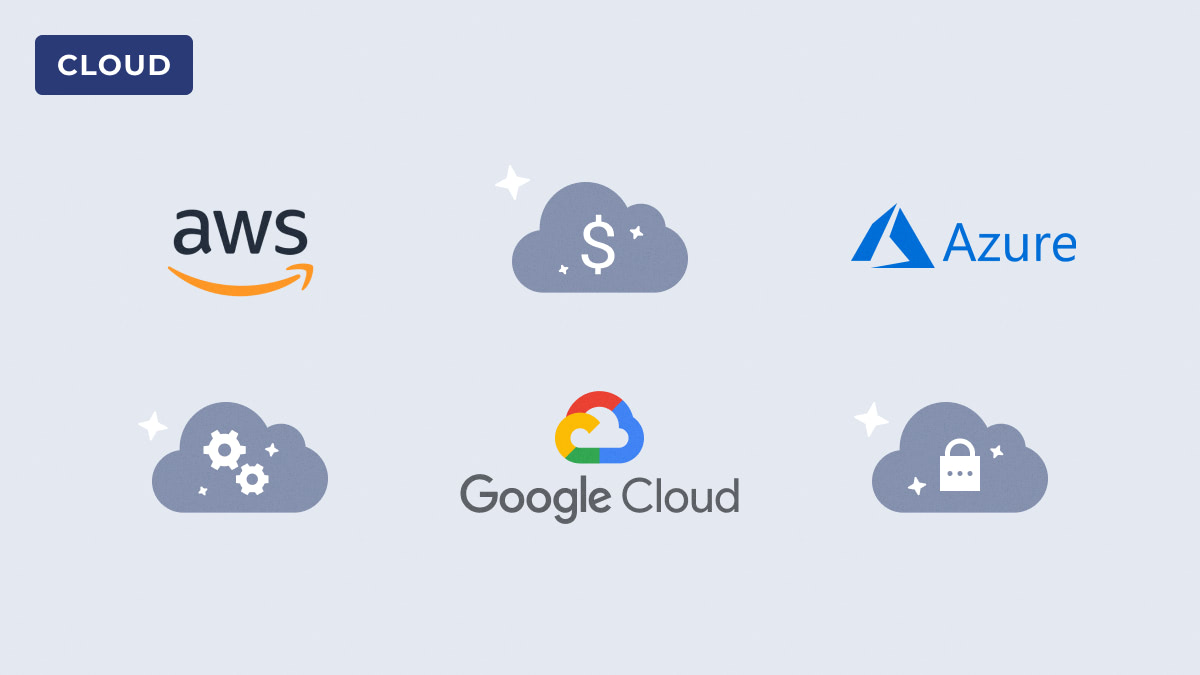
If you’ve decided to shift your organization’s IT and digital environment to the cloud, there are a number of factors to consider when it’s time to choose a cloud service vendor. For a growing company, these concerns likely center around your budget, as well the vital functions you expect the cloud to conduct for your organization.
So, how do you sift through the cloud computing trends and choose the best cloud computing platforms for your needs?
When missteps, roadblocks, and hasty decisions can cost you valuable time and money, it makes sense to thoroughly research your cloud service providers well in advance of the big move. In our AWS vs. Azure vs. Google Cloud Platform comparison, we’ve broken down the top three cloud vendors in hopes of making your move to cloud computing as smooth as possible.
Cloud Platforms Overview
While there are a number of smaller cloud service providers that may prove a good fit for your organization, the current cloud service world is overwhelmingly dominated by a few large vendors primed for public cloud adoption.
In fact, the three most prominent cloud vendors are almost unanimous across the board, no matter who you ask. Amazon Web Services, Microsoft’s Azure, and the Google Cloud Platform have quickly become household names in the fifteen-plus years since AWS’ inception in 2006.
While the AWS platform remains the clear leader in maturity, breadth, and revenue, Azure and Google Cloud each continue to grow by as much as 49% year over year, further increasing their influence over the cloud computing sector. However similar these platforms are in market dominance, they each offer different resources when it comes to computing, networking, and storage options.
When you are searching for the best cloud computing platforms for your organization, either for a cloud migration strategy, or a cloud-native development project, it’s important not to lose sight of your goals, your expected growth, and your budget. This side-by-side comparison of AWS, Azure, and Google Cloud can help you fit the correct vendor to your needs, instead of the other way around.
AWS – the Originator

We’ll begin our side-by-side comparison with what is arguably the original modern cloud computing platform (at least when it comes to cloud computing as we know it). For all intents and purposes, Amazon Web Services practically dominates the market.
What is the AWS Cloud Platform?
AWS, or Amazon Web Services, is the cloud service platform provided by Amazon and offers users computing, storage, and delivery along with other services.
Working together, each of these software as a service (SaaS), infrastructure as a service (IaaS), and platform as a service (PaaS) offerings are a scalable way to help your organization deploy applications efficiently.
Features of AWS
Amazon offers 18,000+ services, including:
- Computing
- Storage solutions
- Cloud app integration
- Analytics and machine learning
- Productivity tools
- Developer and management tools
Strengths and Weaknesses of AWS
Many of AWS’s strengths are tied to its status as the first modern cloud services provider and the gigantic scope of its global operations. Together, these factors have encouraged AWS’s growth and allowed it to provide a large list of interruption-free services for enterprises around the world. Strengths include:
- Supports all major operating systems including macOS (unlike other providers)
- Large selection of services
- Continuous growth of service selection
- Maturity and availability
- Capable of handling a large number of end-users and resources
- Simple startup
While AWS is a strong provider, it does have its weaknesses like any other service provider. Currently, weaknesses include:
- Comparatively high cost
- Additional fees for essential services
- Additional fees for customer technical support
- Resource caps
- Sharp learning curve after startup
Microsoft Azure – the Formidable Competitor

Built by Microsoft web services and released just four years after Amazon’s initial entry into the cloud computing market, Azure has quickly become AWS’s most prominent direct competitor and the world’s second most popular cloud platform.
What Is Azure?
Like AWS, Azure is an integrated platform that offers computing, storage, development, and database opportunities as SaaS, IaaS, PaaS. Together, the platform enables businesses to both deploy and manage applications and other services via the cloud.
Features of Azure
Azure has leveraged the existing structure put in place by Microsoft’s software and business app offerings to repurpose and offer a number of easily-configured, quickly served services, including:
- Cloud development platform
- Blockchain technologies
- Predictive analytics
- Comprehensive IoT integration
- DevOps features
Strengths and Weaknesses
As a traditional provider of IaaS, many of Azure’s strengths correspond with its rich development history in this area. Strengths include:
- Wide availability
- Intuitive configuration with the Microsoft family of software
- Service contract discounts for Microsoft cloud computing users
- Built-in apps that support a variety of languages (including Java, Python, .NET, and PHP)
- Fairly low on-demand pricing
- High redundancies to reduce downtime
However, Azure is not without its weaknesses, and you’ll need to determine if its shortcomings outweigh the potential benefits of cloud computing for your organization. Weaknesses include:
- Lack of data management
- Reports of difficulties regarding network management
- Some believe it is more challenging to learn than other platforms
- Design may feel less professional than other platforms
- Reported issues with technical support
Google Cloud Platform – the Up-and-Comer

As a newer cloud service platform, Google Cloud Platform – also known as GCP or Gcloud – has leveraged Google’s capacity for innovation to emerge as a significant force in the cloud competition.
What Is Google Cloud Platform?
Officially launched in 2008, Google has only recently emerged as a strong competitor to both AWS and Azure. Like the other two platforms, GCP offers IaaS and PaaS, as well as a serverless platform offering computing, storage, databases, multiple networking options, and database and IoT management.
Features of Google Cloud Platform
With the backing of Google’s extensive global reach and seemingly endless capacity for innovation, GCP is quickly catching up to the competition. Currently, it offers services like:
- Productivity management
- Data storage and management
- Cloud app development
- AI and machine learning engines, including cloud speech API, vision API, and more
- Business analytics
Strengths and Weaknesses
As a highly developer-focused cloud-based platform, Google Cloud Platform’s strengths lie in high-end computing, machine learning, and cloud developer tools. Strengths include:
- Superior scalability
- Simple setup and configuration
- Utilization of popular languages like Java and Python
- Generous sustained-use discounts
- Data load balancing and fast response times
However, as a relative newcomer, Google’s reach and diversity does tend to lag behind others for the time being. Although the platform is quickly making gains in these areas, weaknesses include:
- Lack of advanced features
- Less diversity of features
- Fewer service offerings
- Fewer global data centers
Computing Comparison: Which Cloud Service Provider Is Most Robust?
While all three platforms have the benefits of cloud-native computing you might expect from the most dominant names in cloud today – including scalability, speed of service, and optimal security – you’ll need to take a deeper look at the specific types of cloud computing they provide to determine which is best for your organization. Here, we’ve broken down the differences by platform:
AWS Computing
Amazon’s premiere computing service is termed the Amazon Elastic Compute Cloud, or E2C. Its compatibility with the vast majority of other Amazon Web Services means that the service is highly flexible and can be less costly than other services.
With the auto scaling monitor, E2C can provide monitoring of your cloud applications and scale your usage to your current requirements, so you don’t pay more than necessary for your computing needs.
AWS makes use of its own container service, known as Amazon Elastic Container Service, or ECS. You can configure these docker containers as needed or utilize preconfigured settings to manage IP address blocking and access a number of logs, templates, IAM roles, and security groups. AWS also allows a container service for Kubernetes (EKS), in addition to computing features such as:
- AWS Beanstalk
- AWS Serverless Application Repository
- AWS Batch
- AWS Lambda
- Elastic Load Balancing
- Amazon Lightsail
Azure Computing
When it comes to computing, Azure boasts a network of virtual machines based on open-source cloud platforms. As such, its full variety of computing services, including app deployment and development, pre-deployment testing, extensions, etc. are compatible with Windows and Linux servers, as well as third-party solution providers such as SAP and Oracle. If your needs are diverse, you can make use of Azure’s hybrid option, which includes both on-site private computing and cloud hosting platforms.
Azure’s container service is a popular container system based on Kubernetes and termed Azure Kubernetes Service. According to Microsoft, it allows organizations that typically require multiple teams to work together in a single online environment. Other Azure computing features and services include:
- Azure IaaS
- Azure PaaS
- Azure Batch
- Service Fabric
- Azure Functions
- Azure Spring Cloud – which has integral support for Java Spring Cloud
Google Cloud Platform Computing
Google’s Compute Engine, or GCE, is perhaps less functionally rich than the other two platforms – particularly AWS, which has had a few-year head start – but offers many advantages that may help it catch up to its competition.
For example, Cloud Functions can manage and deploy cloud applications, deploy code from other Google services, and scale all of these according to the traffic you receive. As an added bonus, Google’s policies mandate that you only pay when the code is deployed.
Similar to Azure, GCE provides mature support for Kubernetes or Kubernetes-based services, for instance GKE (Analogue of EKS and AKS) and Knative. Other features of GCE include:
- Knative
- Graphic processing unit
- Google App Engine, and
- Instant groups
Storage Technologies Comparison – A Clear Advantage
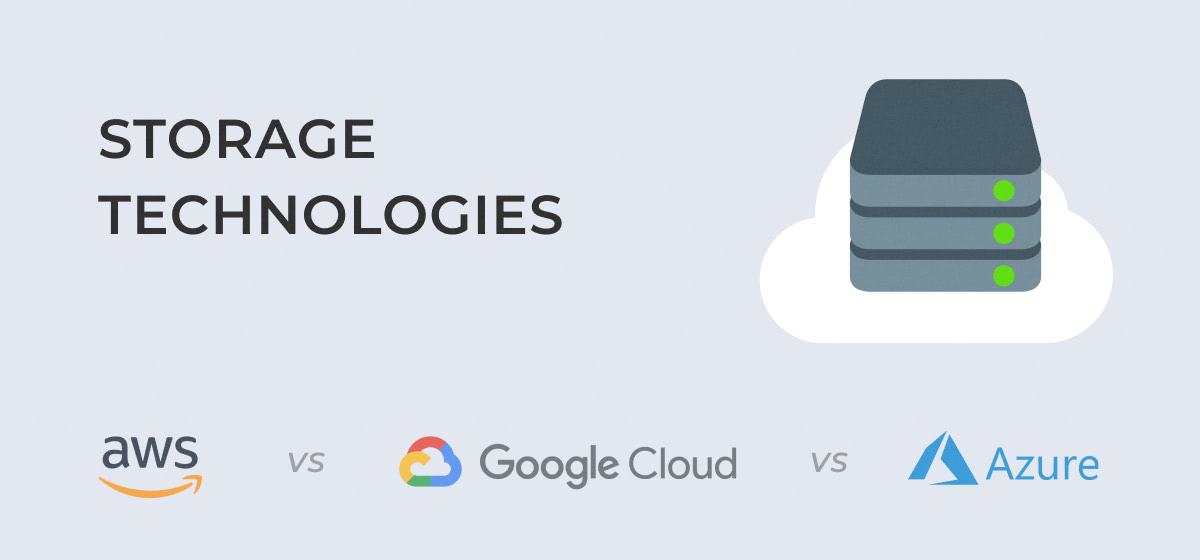
A number of organizations are first drawn to the potential of cloud business due to the extended storage capabilities available. In fact, each of the top three cloud service providers offers a variety of storage options built to apply to a diverse set of needs – the trick is determining which of these best suits your own. Here, we’ve broken your options down by vendor:
AWS Storage
Amazon’s Simple Storage Service, or S3, is an industry standard protocol that is offered by most other major providers (e.g. GCP). Amazon also offers large block storage through the Elastic Block System (EBS). Amazon’s Simple Storage Service, or S3, or large block storage through the Elastic Block System (EBS).
However, if you need a more comprehensive storage approach, Amazon’s Storage Gateway is a hybrid cloud provider that enables you to utilize both a local cache as well as the cloud. If your data storage needs outstrip those of the average organization, Amazon’s Elastic File Storage solution allows you to expand your storage capabilities as needed.
Similarly, ElastiCache allows you to access low latency in-memory data stores as your needs dictate. In addition, AWS offers SQL-supported databases and a data migration service to decrease your downtime and ease your transition to AWS. Other features include:
- Storage through Snowball, Snowball Edge, or Snowmobile
- Databases, including including RDS (providing you with six familiar relational database engines to choose from including Amazon Aurora, PostgreSQL, MySQL, MariaDB, Oracle Database, and SQL Server.), Neptune, and Redshift.
- A comprehensive Glacier backup service
Azure Storage
Like AWS, Azure offers a variety of storage cloud types targeting a number of organizational needs. Azure Data Lake Storage and Queue Storage are a good option for larger organizations with high data storage needs. In contrast, Blob storage is ideal for organizations needing to store large amounts of unstructured data. Meanwhile, File Storage is reliable and optimized for most business needs.
In addition to traditional storage, Azure offers the largest number of SQL-based databases, encompassing three different format types. Perhaps even more intriguing is Azure’s approach to hybrid – the Server Stretch database that allows entities that use Microsoft SQL Server for on-premises activity and additional databasing on the cloud.
Worth noting is the fact that Azure offers the only backup recovery system among the three cloud providers – which comes as a welcome addition to the standard system backup.
Other features not mentioned above include:
- Disk storage
- Database solutions like Azure Data Warehouse, Azure SQL Family, Azure Database for PostgreSQL, MySQL, and MariaDB.
- Archival backup
Google Cloud Platform Storage
Unlike the other two services, Google’s storage options are fairly basic in nature, with cloud storage and persistent disk storage rounding out the selection. However, what is available is reliable and wide-ranging in support, as GCP features both SQL and no-SQL databases. Currently, options include:
- Cloud SQL – Fully managed relational database service for MySQL, PostgreSQL, and SQL Server.
- Cloud Datastore – highly scalable NoSQL database.
- Cloud Bigtable – A fully managed, scalable NoSQL database service for large analytical and operational workloads.
- Cloud Spanner – Fully managed relational database with unlimited scale, strong consistency, and up to 99.999% availability.
In addition, Google offers an in-house transfer service, as well as access to a growing number of online transfer services. Unfortunately, Google’s backup services are also fairly basic, consisting of Nearline backup for frequently accessed data as well as Coldline backup for infrequently accessed data.
Development Tools Comparison – A Wealth of Innovation
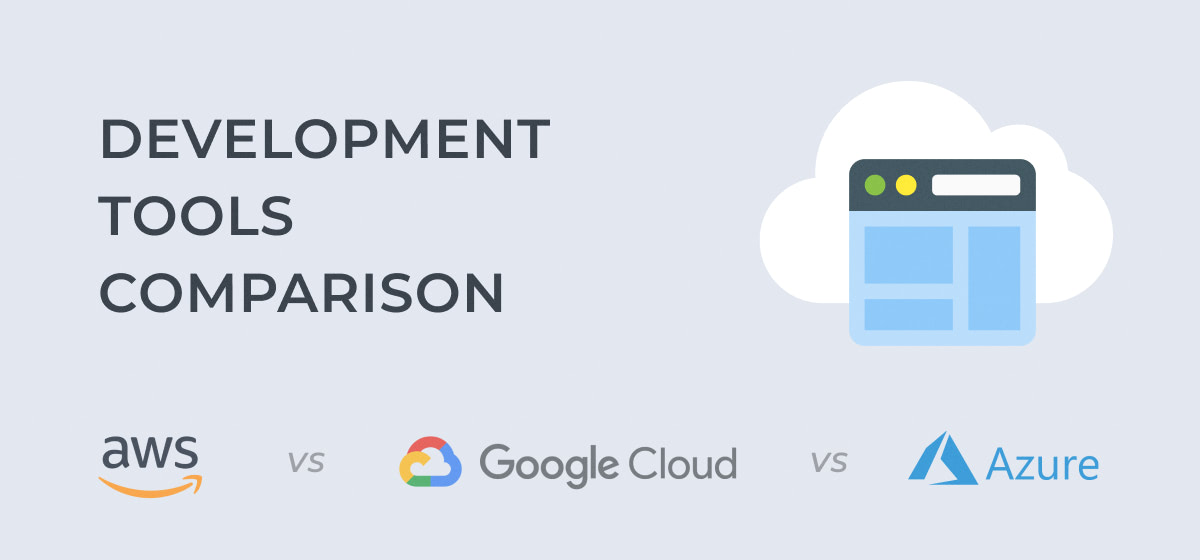
Amazon, Microsoft, and Google – perhaps it’s no surprise that these three companies, each a significant bastion of innovation, learning, and advancement in its own way, remain dedicated to building out a diverse selection of development tools.
As a result, we believe that each of these organizations has a strong portfolio in this area. The differences lie in their offerings in artificial intelligence and machine learning, serverless platforms, and networking tools. Here’s a breakdown:
AWS Development Tools
As one might expect from the company that pioneered the digital assistant, Amazon’s focus remains on the use of AI and machine learning – and how each might translate to the IoT organizations like yours are developing even as you read this comparison.
In fact, AWS offers twenty total AI/ML and IoT tools, including the Lex interface that brings the technology of Alexa to your fingertips.
AWS also features not one but two serverless tools. Lambda is a serverless computing environment, while AWS Fargate allows you to deploy cloud apps with ease. Other AI/ML and IoT tools include:
- SageMaker
- Polly
- Translate
- Transcribe
- Machine Learning
- DeepLens
- Deep Learning
- Comprehend
- IoT Core
- IoT Button
- IoT One-Click
- IoT Device Defender, and more
Azure Development Tools
As you might suspect, the offerings from Microsoft Azure are somewhat less AI-focused than those from Amazon’s AWS. However, we’d argue that they are a bit more targeted and perhaps more able to carry out a number of individual functions.
In particular, if you already utilize Microsoft software and apps, Azure’s Cognitive Services suite can integrate with these seamlessly.
When it comes to serverless platforms, Azure offers one to AWS’ two. With Azure Functions, you can create, manage, and achieve complex workflows. In addition to those mentioned above, Azure offers a number of other AI and IoT tools, including:
- Machine Learning
- Azure Bot Service
- IoT Edge
- IoT Hub
- Computer Vision
- Text-to-Speech
- Time Series Insights
- Stream Analytics
- Industry-specific services such as Microsoft Genomics
Google Cloud Platform Development Tools
Google has long used AI and machine learning in what has become the world’s largest search engine, and it’s no surprise that similar strategies come into play when it comes to GCP’s development tools.
From cloud text-to-speech and translation features to cloud app development, Google’s algorithms appear in each of their many tools designed to aid development around the globe. If your organization is looking to utilize AI and machine learning, GCP could be the ideal choice.
Due to its fairly recent emergence on the cloud scene, Google’s IoT and serverless platform offerings are somewhat limited. Examples of their serverless product offerings include Cloud IoT Core and Cloud Functions, as well as Cloud Run (which allows you to develop and deploy highly scalable containerized applications on a fully managed serverless platform). However, many organizations feel that the AI/ML portfolio more than makes up for this slight drawback, with offerings including:
- Cloud Machine Learning Engine
- Cloud Natural Language
- Cloud Speech API
- Cloud Translation API
- Cloud Talent Solution
- Cloud Video Intelligence, and
- Dialogflow
Network Comparison – Three Strong Options
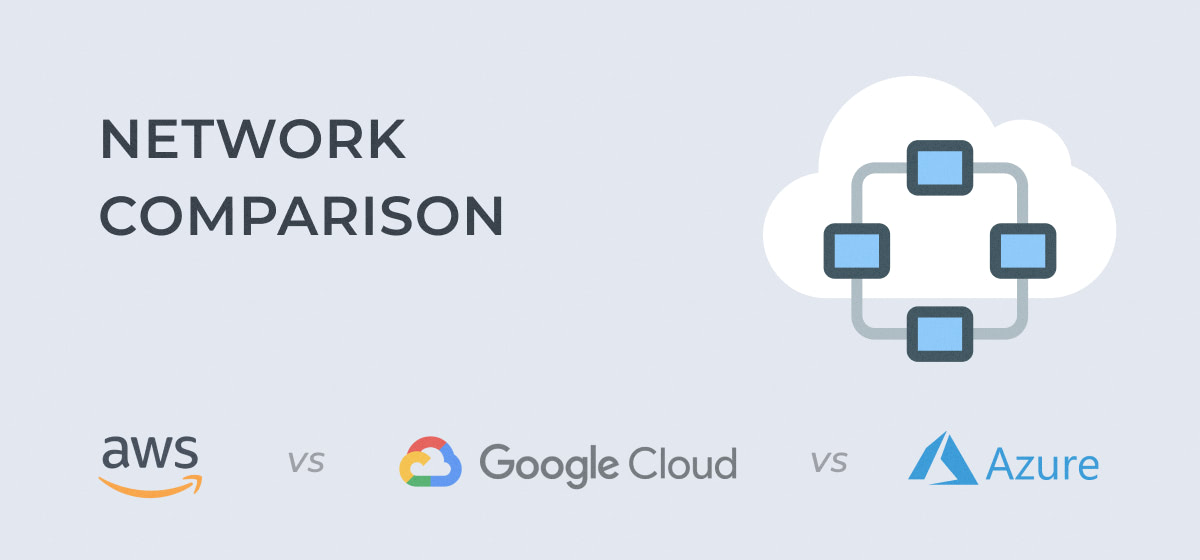
Currently, all three of these cloud computing services offer robust cloud networks that may prove ideal for your organization. While network reach and features provided varies between the three, we consider all the networks mentioned to be solid options. However, we’ve listed them here in order of network reach:
- Azure Virtual Network. Available in 54 regions around the globe and counting, Azure keeps traffic within the Azure network as much as possible, instead of over the internet. The result is a speedy, secure networking solution that exceeds even AWS’s reach. In addition, Azure Virtual Network is highly flexible, allowing organizations to bring their own IP addresses and DNS servers or utilize a hybrid approach to networking.
- Amazon Direct Connect. Amazon has built a comprehensive global framework around 22 different global regions, 14 data centers, and 114 edge locations to ensure continuous service and reliable performance at all times. This allows AWS to offer speedy cloud deployment models, fast delivery, and lightning-quick response times for its large array of services. More specifically, its industry-standard 802.1q VLANs allow a dedicated connection between private networks to AWS via any of the many Direct Connect Locations.
- GCP. Although Google Cloud Platform does not have the reach of the other two providers, it is backed by Google’s trademark capacity for innovation. With the addition of undersea cabling, Google currently includes 21 regions and counting as well as a rapidly growing number of data centers around the world. Hybrid connectivity products like Cloud Interconnect and Cloud VPN allow you to connect via enterprise-grade direct connections, or via an IPsec VPN.
Enterprise Integration Comparison
When it comes to cloud enterprise integration – i.e., seamlessly interfacing your cloud platform certification with your organization’s existing system to promote ease of data exchange and more – comparison can get a bit less straightforward.
In fact, which of the Big Three providers reigns supreme in cloud enterprise integration ultimately depends on what you have in place currently. We’ve arranged them in order of out-of-the-box integration capabilities:
- Azure. Enterprise cloud solutions via Azure is perhaps the most obvious choice – particularly if your organization already utilizes a full suite of Microsoft business and cloud software. In fact, Azure and its full range of tools were developed with this interconnectivity between software and applications in mind, making Azure the ideal option for scalability and efficiency if you use MS products.
- AWS. Amazon’s best claim to the enterprise integration title remains its storage capabilities. Both Glacier storage backup and AWS’ Storage Gateway are capable of integrating with existing enterprise on-premises environments, making it an efficient option when it’s time to make the move to the cloud.
- Google Cloud Platform. We’ve already mentioned that you’ll need separate backup and archiving services to bolster your GCP storage capabilities. However, at the time of this writing, you may need other PaaS solutions to complete your enterprise integration as well. As a result, GCP may be lacking where both AWS and especially Azure excel.
Cloud Security and Compliance Comparison
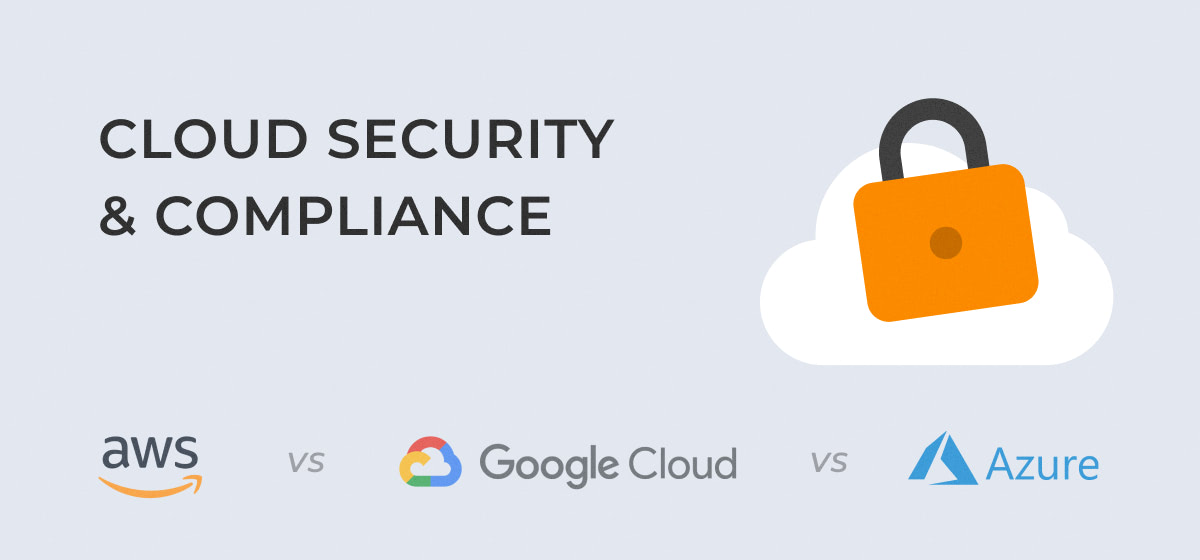
For cloud service platforms that incorporate massive amounts of organizations’ business data, customer data, cloud infrastructure, cloud network capabilities, and more, security and cloud app security are of enormous importance.
As a result, each of the three most popular cloud-based platforms regularly release statements regarding the security and compliance protocols they are following with regards to both data centers and cloud network security. We’ve provided a brief comparison of all three, beginning with the oldest.
- AWS security. Since Amazon is the oldest – and most mature – cloud service provider, it has experienced a broader range of issues in the past and found solutions to them. Amazon offers isolation via security groups (firewalls) and granular IAM as well as vulnerability assessment via AWS Inspector, API activity monitoring, threat intelligence via Guard Duty, and data loss prevention. The only issue appears to be also due to AWS’ age – many of the aforementioned security features were implemented separately and before large-scale cloud integration platforms were on the company’s radar.
- Azure security. Where AWS’s strengths are due to its isolation (you’ll need to separately configure security protocols for each account), Azure’s lie within its central security system, controllable from a single directory. However, with less isolation and controls that monitor console and API activity for the entire organization comes increased opportunities for threats from within. Enterprises also fault Azure for inconsistent documentation of compliance and defaulting to less-secure configurations.
- Google Cloud Platform security. Overall, many experts view GCP as a successful security midpoint between AWS and Azure. Google has taken care to maintain centralized security access while isolating projects and defaulting to more secure configurations. However, the breadth of GCP’s security features and security experts are not as impressive as AWS – still, the Cloud Security Command Center is strong.
Management and Monitoring Insight
Without the proper cloud management platform and monitoring utilities, cloud systems would cease to function as expected. However, by managing cloud functions like billing, traceability, code management, and more, AWS, Azure, and GCP perform as cohesive cloud platforms.
With proper cloud monitoring, you can achieve the necessary insights into the health and performance of the cloud you choose.
This table presents the full range of cloud monitoring services from each of the top three cloud service platforms:
| AWS | Azure | Google Cloud Platform | |
| Billing | Billing API | Billing API | Cloud Billing API |
| Administration | Application Discovery Service Systems Manager Personal Health Dashboard | Resource Health Storage Explorer | Cloud Console |
| Resource Management & Monitoring | CloudWatch X-Ray Management Console | Azure Portal Monitor | Cloud Monitoring Cloud Debugger Error Reporting |
| Deployment and DevOps | OpsWorks CloudFormation | Automation Resource Manager VM Extensions | Cloud Deployment Manager |
| Cloud Advisor | AWS Trusted Advisor | Azure Advisor | Cloud Compliance |

Throughout these head-to-head cloud service comparisons, we’ve often presented AWS, Azure, and GCP in that very order – partially due to the chronological age of the three platforms, but also as a representation of their overall popularity and market share.
In fact, we’ve found that age, popularity, and market share coincide. According to the most recently released market share information available at the time of this writing (Q3 of 2020), the different cloud platforms for business present in this order:
- AWS. With a total market share of 32%, Amazon dominates the global market. In fact, it generated more revenue than the other two most popular cloud platforms combined at a healthy $11.6 billion, growing at a rate of 29% this quarter.
- Azure. With Azure market share reaching 19%, Microsoft has a healthy share of the global market. Although Microsoft does not release revenue information for Azure, it did report a growth rate of 48% over the previous quarter.
- Google Cloud Platform. By far in third place with a total market share of 7%, GCP continues to make significant growth strides. In fact, its growth stands at 45% year over year for an overall revenue this quarter of $3.44 billion.
Support and Uptime Comparison
Of course, even with the most well-planned migration, there is always the potential for potential roadblocks along the way. Fortunately, between your cloud management partner and your service provider, you’ll receive considerable support. Each of the three major providers offer their own support plans:
- AWS Support. Offered in three separate tiers, for Developer Support, Business Support, and Enterprise Support, Amazon provides a mix of tools, cloud technology, and experts. While the Developer tier is only available during business hours, both Business and Enterprise support are offered 24/7. Further, Enterprise Support features a dedicated Technical Cloud Account Manager to help coordinate your efforts.
- Azure Support. Similar to AWS, Azure offers support in a tiered access model. The Developer plan provides unlimited support during business hours, while the Standard plan includes 24/7 access. For more structured support, the Professional Direct plan offers an account management team, while Enterprise support provides support across the entire range of Microsoft cloud services and products.
- Google Cloud Platform Support. Unlike the other two providers, the premium cloud support Google employs functions as either portfolio or stand-alone programs. With the portfolio option, you’ll get support for both GCP and Google Workspace or choose stand-alone support for either product.
Pricing Comparison
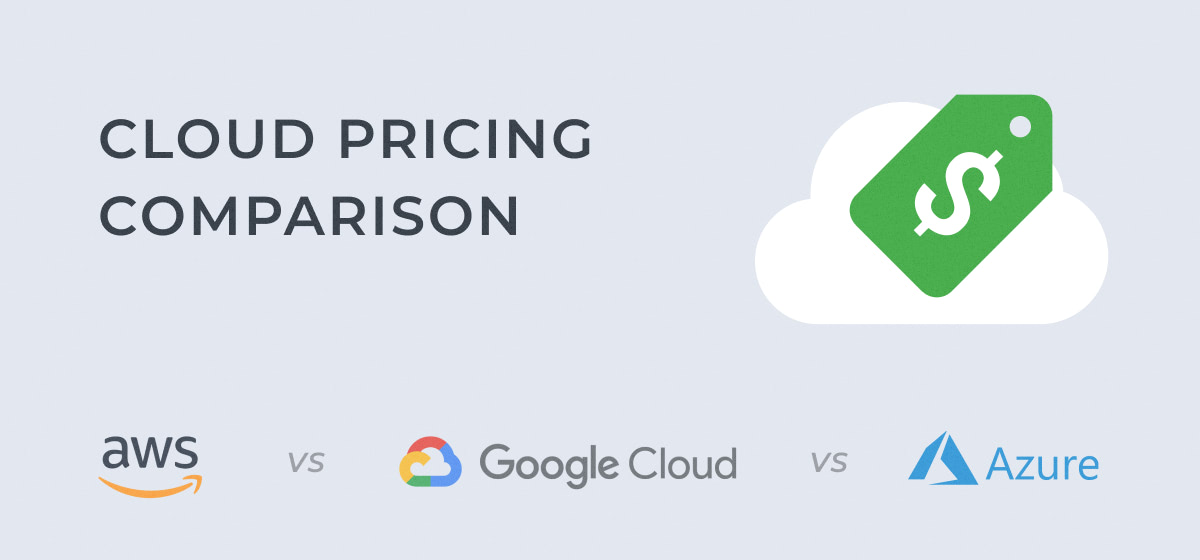
When it comes to pricing, each of these popular platforms have two things in common – a no-cost tier with severely limited options and a per-[hour or minute]on-demand pricing structure for all resources. Unfortunately, pricing can vary widely by resource use, service choice, and more, so comparison can be difficult.
However, we’ve summarized the free tier features, as well as a relatively straightforward comparison of each service’s pricing structure.
- AWS Pricing. The pricing structure offered by Amazon has been labeled as “so complex, you’ll need a third-party app to manage it.” However, Amazon does offer a 12-month stint of 750hr/month EC2 services with its free tier and up to a 75% discount for a 1-3 year commitment.
- Azure Pricing. Complicated in a manner similar to AWS, Azure users often employ a third-party app to manage costs. Also similar to AWS, Azure offers 12 months of 750hr/month Virtual Machines usage with its free tier and a steep discount for a 1-3 year commitment.
- Google Pricing. It’s clear that Google has tried to learn from its competitors’ mistakes and has implemented a relatively straightforward cost/second model. In addition, GCP includes one free micro-instance per month for the first year for its free tier, a $300 credit for a year of service, and a 30% discount for sustained use.
| AWS | Azure | Google Cloud Platform | |
| Minimum Instance | 2 virtual CPUs, 8 GB RAM: $69/mo | 2 virtual CPUs, 8 GB RAM: $70/mo | 2 virtual CPUs, 8 GB RAM: $52/mo |
| Maximum Instance | 3.84 TB RAM,128 vCPUs: $3.97/hour. | 3.89 TB RAM, 128 vCPUs: $6.79/hour. | 3.75 TB RAM, 160 vCPUs: $5.32/hour |
Overall Comparison Chart
In an effort to facilitate your choice between the three major cloud platforms, we’ve provided this comparison chart. Keep in mind – the various strengths and weaknesses of the individual platforms in these business-critical areas may not align with your unique needs.
Comparison Table of AWS vs Azure vs GCP
| AWS | Azure | Google Cloud Platform | |
| Computing | Mature Catalog, Functionally Rich (EC2, plus ECS and EKS containers) | Diverse Catalog (Virtual Machines, open source plus AKS containers) | Growing Catalog (Compute Engine, plus Kubernetes Engine) |
| Regions/Locations | Medium-High Reach (22 regions of global infrastructure) | Best Reach (54+ regions) | Growing Reach (21 current regions and zones) |
| General Network | Speedy, Dedicated Connection (AWS Direct Connect) | Broad and Flexible (Azure Virtual Network) | Most Limited (Cloud Hybrid Connectivity) |
| Storage | Largest Range (S3 Object Storage, plus block, file, and hybrid storage) | Medium-Large Range (Azure Blob Storage, plus Data Lake, file and hybrid storage) | Basic (Cloud Storage) |
| Databases | Mid-Sized Range (SQL-supported and non-SQL) | Largest Range (SQL-supported and non-SQL, plus hybrid) | Mid-Sized Range (SQL-supported and non-SQL) |
| Management | Full Range of Services (see associated table) | Full Range of Services (see associated table) | Full Range of Services (see associated table) |
| Security | Mature, Isolated (offers firewalls, granular IAM, and vulnerability assessment) | Largest Gaps (separate protocols, plus less-secure defaults) | Reliable Midpoint (centralized access through Cloud Security Command Center) |
| Analytics & Big Data | Medium-High Powered (AWS Analytics, SQL support, open standard APIs) | Most Powerful (Azure Stream Analytics, SQL support, machine learning) | Strength in Advanced Analytics (Google Cloud Platform Analytics and data analytics) |
| AI | Largest Provider (mature services) | Medium-Large Provider (proven platforms) | Pioneer, Large Provider (multiple AI and ML tools) |
| IoT | Largest Provider (IoT Core and Alexa-based services) | Smaller, but Targeted (IoT Edge-based services) | Emerging (Cloud IoT Core-based services) |
| Blockchain | Most Widely Used Blockchain on AWS | Three-Step Solution Blockchain Technology and Applications | Infrastructure Assistance for Ethereum and Hyperledger Fabric |
| Integration | Strong (Supports interoperability, especially via public cloud) | Strong (Supports hybrid architecture and interoperability) | Emerging (Strong APIs, limited ETL tools) |
| Migration | Requires IT Proficiency | Requires IT Proficiency | Requires IT Proficiency |
| Pricing | Costly (management is a hurdle – see chart) | Manageable (Multiple options – see chart) | Minimal (Free credits – see chart) |
| Backup | Comprehensive (Glacier backup service) | Best Backup (Azure archival backup and system recovery services) | Basic (Nearline and Coldline) |
| Training | Cloud Skills Courses and Programs | Azure on Microsoft Learn | Cloud Training Classroom |
